Newsletter
Sign up and stay in-the-know about The Crowd & The Cloud and the world of citizen science.


My name is Jessica Griffiths, and I work as a biologist. I am also the volunteer coordinator for San Luis Obispo County for the Western Monarch Thanksgiving Count, which is run by the Xerces Society.
Where do the butterflies come from?
We're on the central coast of California, which is really the heart of where monarch butterflies spend the winter. Monarch butterflies come from all over the western United States to the coast of California. They spend the winter in overwintering sites from San Francisco all the way down to San Diego. Right now, we're in San Luis Obispo County, which is one of the spots that has the highest number of monarch butterflies. Monarch butterflies come to the central coast of California because it meets all of the requirements that they have for a safe place to spend the winter. It has the right temperature, it does not freeze. There's the right amount of sunlight, the right amount of humidity, and the groves of trees where they spend the winter have the right amount of protection from the wind. All these things come together to make the perfect spot for a monarch butterfly to live out the winter.

Why do you have volunteers count the butterflies?
Back in 1997, a group of concerned citizens decided that there needed to be a better, more standardized way of keeping track of monarch butterflies. They noticed that monarch butterflies tend to peak in population at the overwintering sites around Thanksgiving. Thus was born the Western Monarch Thanksgiving Count. From three weeks around Thanksgiving, two weeks before and a week after, this is the time period during which all of the monarch butterfly overwintering sites are counted. We have this very specific window during which the numbers are highest to count these overwintering sites.
It's very important for us to understand how many monarch butterflies there are so we can figure out what we need to do to protect them. If monarch butterflies are decreasing, then we need to understand why they're decreasing, where are the areas that they are decreasing the most so that we can move to protect those areas or perhaps correct something that has gone wrong. If some habitat has been lost, then we can act, perhaps, to restore that habitat. We can't protect the monarch butterflies if we don't know how many there are and where they are. By counting them, we can get that information.
Monarch butterflies are a very important part of our ecosystem. They pollinate flowers which might develop into fruits, or nuts, or produce that you and I enjoy. They also pollinate flowers, native plants that require pollination to survive. The monarch butterfly migration is a really unique natural phenomenon. There's no other insect that travels such long distances and gathers in such large numbers.

How do you count the butterflies, what is the process?
In order to count monarch butterflies, you have to have a strong neck [laughs] because you are going to spend a lot of time looking up at the trees. I like to describe it as the “jelly bean in a jar” method. You take a pair of binoculars and you look at a group of monarch butterflies, and you count a small portion of that cluster, say 10 butterflies. You know how much space 10 butterflies take up, and then you can extrapolate how many groups of 10 there are in that cluster. If it's a really large cluster, you might count by groups of 50 or even 100. You can get a really accurate estimate of how many monarchs there are. You do that for every cluster, and then you add up the total of how many monarchs there are in all the clusters and you get a number for how many butterflies are at that site.
What happens with the data collected, who uses it?
The data that all of our counters collect is sent to one place, the Xerces Society. It’s a “not for profit,” and they oversee all the data collection for the Western Monarch Thanksgiving Count. The Xerces Society takes all of the data collected from all of the volunteers and they enter it into a huge database of all the overwintering sites. They also gather data on habitat quality, so some of our volunteers, in addition to counting monarch butterflies, are also assessing the habitat characteristics of those overwintering sites. The Xerces Society takes all of that data, and they actually will analyze it. They have put out several papers as well as guides for landowners on how to conserve monarch butterflies on their property. This data is being used, it's being turned into management and conservation recommendations that can be implemented on the ground by homeowners, citizens, landowners, and land managers, to better preserve monarch butterfly habitat and make a difference.
What motivates you to count butterflies?
Walking into a monarch butterfly overwintering site is one of the most amazing experiences you can have. You walk into the site, and the first thing you notice is the clusters of monarch butterflies hanging, just dripping off the branches. They look at first like dead leaves, until you look closer and you realize that it's hundreds or maybe even thousands of these butterflies. When it starts to get warm, their wings start opening up. You start seeing splashes of orange here and there, and then they start flying. It's truly magical when you have hundreds of butterflies flying all around. It's like something out of a fairy tale.
I think that one of the reasons I am so passionate about monarch butterflies is because they are so unique. They're also a very iconic insect. Even the smallest child can recognize a monarch butterfly. It is so important that we do not lose that. I want there to be monarch butterflies forever. I want our children and our children's children to be able to walk into a grove of trees and look up and see hundreds and thousands of monarch butterflies flying all around. I feel that it is my responsibility to contribute to the research that is being done, to the data collection that is being done so that we can have the best, most up to date information and make the best choices about how to conserve our monarch butterflies for the future.

What kinds of people volunteer to count?
We have volunteers from all walks of life. We've got stay-at-home-moms, we've got young professionals, we've got college students, and we have retirees who have discovered a passion for these little monarch butterflies. Anybody can learn to count monarchs. All you have to do is get a pair of binoculars and be able to look up into the trees. All you have to have is a passion for learning and an urge to make a difference.
How important is citizen science to monarch butterfly conservation?
The Western Monarch Thanksgiving Count would not exist without citizen scientists. Without volunteers contributing their time, we would not be able to visit as many sites as we do. We would not be able to count all of the butterflies that we count every year, and our data would not accurately reflect the state of the western monarch population. Citizen scientists are absolutely crucial to the function of the Western Monarch Thanksgiving Count, and it would not take place without them.
Citizen science is more than people who are excited about participating or want to make a difference. There has to be some science behind it. All of our volunteers are rigorously trained on the proper counting protocol. The reason that it's very important to follow that is that in order to collect the best quality data, you have to have some kind of standards. There needs to be standardized data. In order to identify trends and to be able to say something about the data and properly analyze it, you need to have standardized data collection protocols in place.
